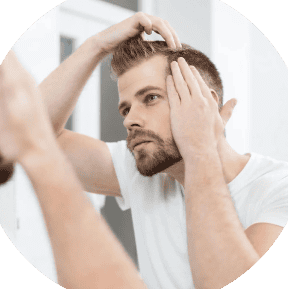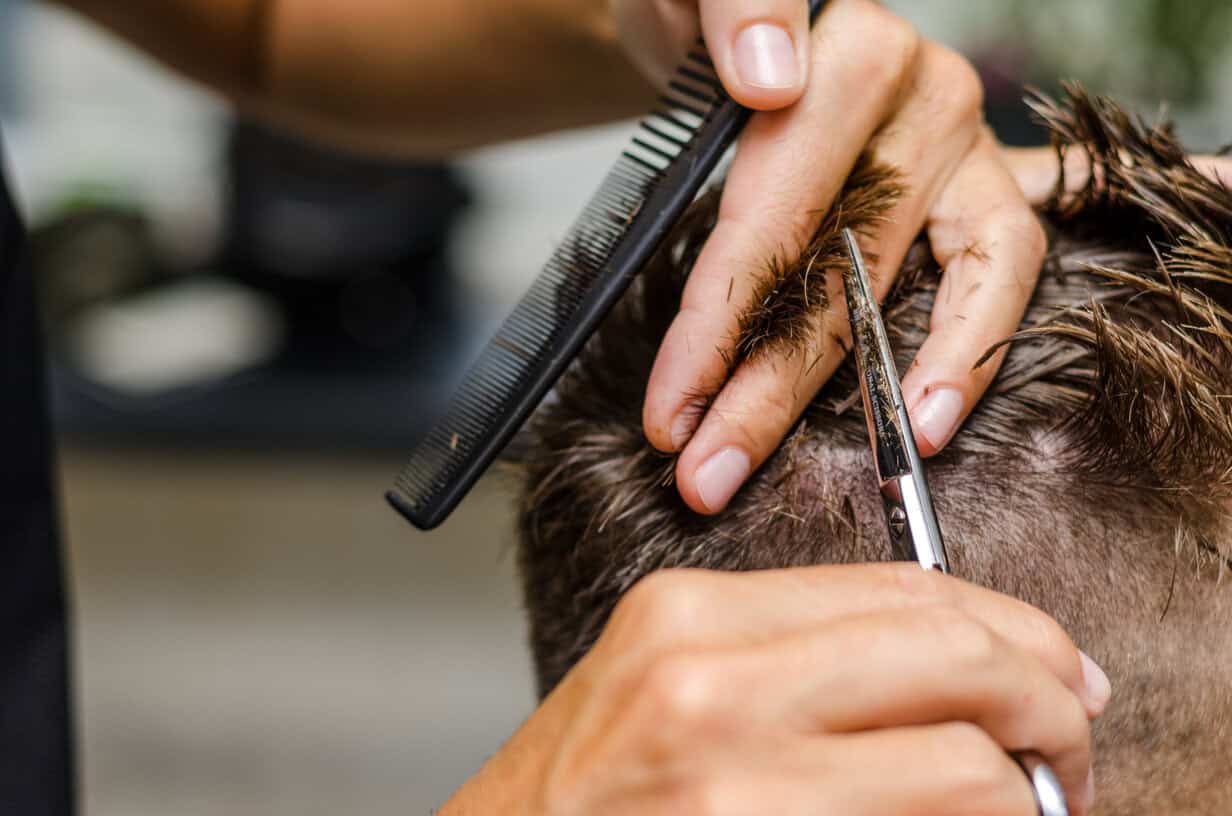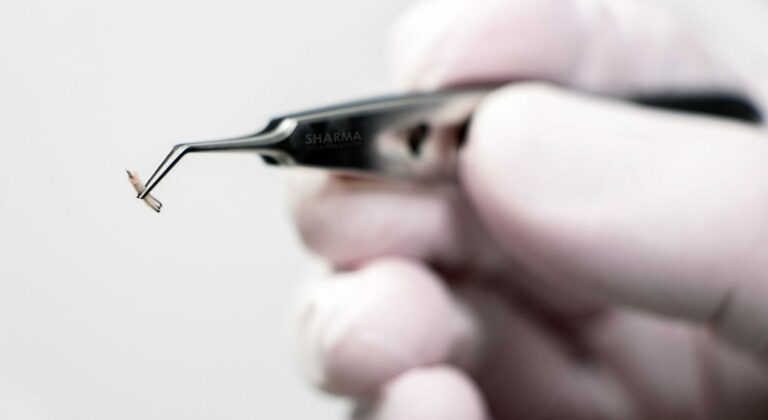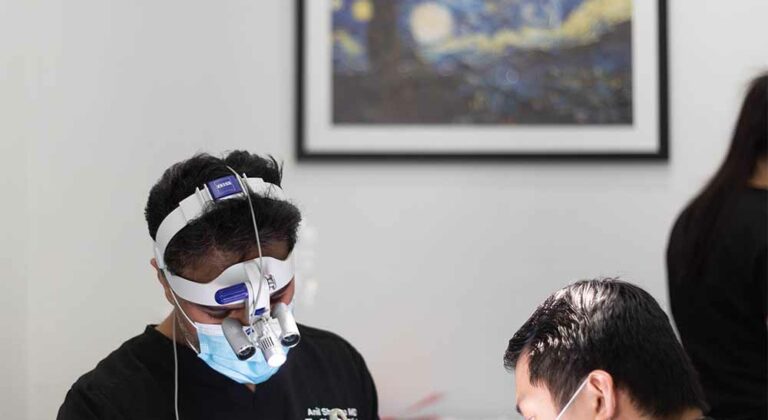You’ve just had a hair transplant, you’ve followed the surgeon’s directions, and results are starting to show. But when can you start having regular hair trims again, and how can you ensure haircuts and day-to-day styling won’t compromise your results?
Post-transplant hair is delicate and requires a thoughtful approach to care and styling. By taking this approach, you’ll protect new grafts, encourage healthy growth, and achieve your desired look. Here’s everything you need to know about haircuts and styling after a hair transplant.
When to get a haircut after a hair transplant
The timing of your first haircut post-transplant is critical to ensure the health of your grafts and the success of your procedure. The following can help you decide whether it’s safe to start cutting and styling as usual:
The initial waiting period
After a transplant, most surgeons recommend waiting 3-4 months before any haircut. During this time, grafts are settling and your scalp is healing. It’s important to hold off on haircuts until this initial healing period is over. Early cutting can disrupt the implanted grafts, leading to uneven growth or loss.
The risks of cutting hair too soon
Cutting hair prematurely can accidentally pull or dislodge the transplanted follicles. This can also lead to scarring. Irritated or unhealed skin can scar, which could have an impact on the overall aesthetic result.
Signs it is safe to visit a stylist
Wait until your scalp has fully healed, and there are no visible scabs or significant redness before you visit a hairdresser. Look out for small stubble in transplanted areas. This is a good indication that your grafts are intact and growing (and you’re ready to return to the hairdressing chair).
Remember, it’s crucial to consult your surgeon for a personalized recommendation on when it’s safe to return to your stylist based on your procedure and scalp condition.
Choosing the right hairstyle for new growth
Styling your new hair requires a careful approach to avoid damaging delicate grafts. Your choices in hairstyles can significantly affect the health and appearance of your hair:
| Short Hair | If you’re looking for a clean, low-maintenance look, short hair may be the ideal choice. With less length, you may notice regrowth more than you would with longer styles. Another upside to this option is that it can be easier to blend the hair with the transplanted hair during initial regrowth. Please note that, after the initial healing phase, scissors are typically safer for trimming as they don’t tug on the scalp like clippers might. Clippers should generally be avoided for at least the first month. |
| Long Hair | Longer hair can allow you to incorporate protective styles into your routine — this is a great way to minimize damage to your transplanted hair. If you do opt for longer hairstyles, bear in mind growth may appear uneven for the first few months as the transplanted hairs grow out. |
| Thick or Curly Hair | For thick or curly hair, opting for layered cuts can help enhance your natural volume while blending the new growth seamlessly. |
| Fine or Straight Hair | For fine or straight hair, you can choose textured styles which mask uneven lengths and add lift. Textured hair may need extra care, so to avoid excessive manipulation and breakage, consult stylists with expertise in your specific hair texture. |
If your procedure was follicular unit extraction (FUE) or a similar method, you may get touch-ups on longer areas without disturbing the grafted zone.
Hairstyles to avoid
Tight hairstyles like ponytails, braids, or updos can stress new grafts and should be avoided in the first few months. In the same vein, try to limit your usage of backcombing or frequent styling that pulls on the scalp.
If you feel the haircut doesn’t blend the hair sufficiently, you can always use volumizing sprays or powders to add fullness and disguise any sparse areas during early growth phases.
Avoiding damage and protecting grafts
Using the right products promotes healthy growth while protecting your scalp and hair. Opt for sulphate-free, moisturising shampoos to cleanse without irritation as these milder options can reduce scabbing. Also, look for lightweight, non-comedogenic conditioners to hydrate hair without clogging your follicles.
Avoid harsh chemicals like relaxers or permanent dyes, especially during the first six months. High-heat styling tools such as flat irons and curling wands should also be avoided during this period. Consider using wide-tooth combs to prevent tugging and setting your blow-dryer to cool or lukewarm temperatures to avoid overheating.
Further reading: What is the Best Shampoo to Use After a Hair Transplant?
Long-term hair health habits
Incorporate these long-term habits to maintain and promote healthy growth post-transplant:
Implement a strict daily care routine:
- Wash hair gently 2-3 times a week with a mild shampoo.
- Massage the scalp lightly to stimulate blood flow without irritation.
Eat well and take it easy:
- Include foods rich in biotin, zinc, iron, and omega-3 fatty acids.
- Proper hydration supports scalp health.
- High stress can lead to hair shedding; practice relaxation techniques.
Get regular trims:
- Trimming every 6-8 weeks prevents split ends and encourages healthy growth.
- A stylist experienced in post-transplant hair can suggest the best trim intervals.
Incorporate supplements into your routine:
- Consult with your doctor about hair growth supplements like biotin or collagen, which may enhance thickness and strength.
Protect from damage:
- Wear hats or use SPF for scalp protection when outdoors.
- Avoid chlorine and saltwater exposure without proper rinsing.
Navigating the transplant journey
Ultimately, long-term success depends on consistency and care. Partnering with a stylist knowledgeable about post-transplant hair can make all the difference. Contact our dedicated team here at Sharma, and we’ll answer any questions you may have on care after your procedure.
BOOK NOW
Talk to a Hair Transplant Expert
Are you looking for the most effective treatment plan to reverse the effects of hair loss? Dr. Sharma has a long-lasting commitment to offering the best services in the industry. Not only is he experienced with hair loss treatment, but he is passionate about helping each patient receive excellent results.

Share this:
Medically reviewed by
Updated on
Have a question?
Find out how we can help you look feel your absolute best
Contact us 780-476-7970


